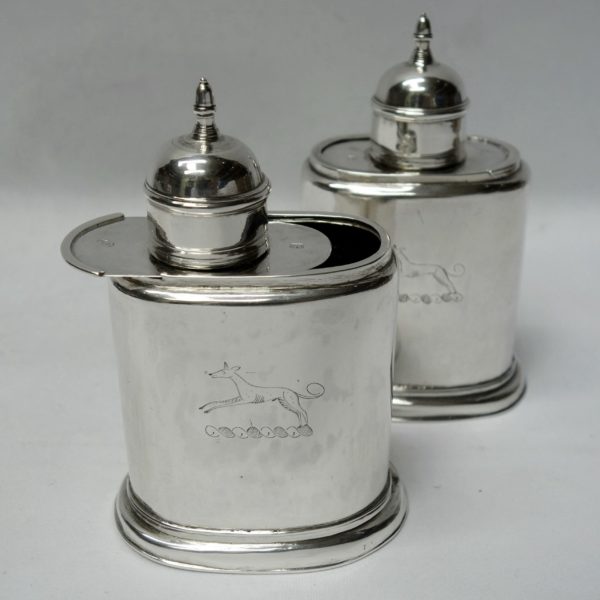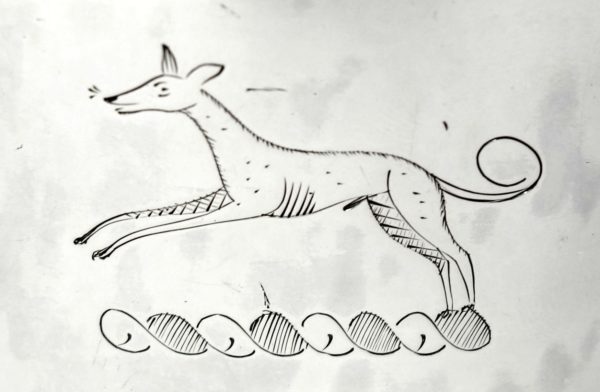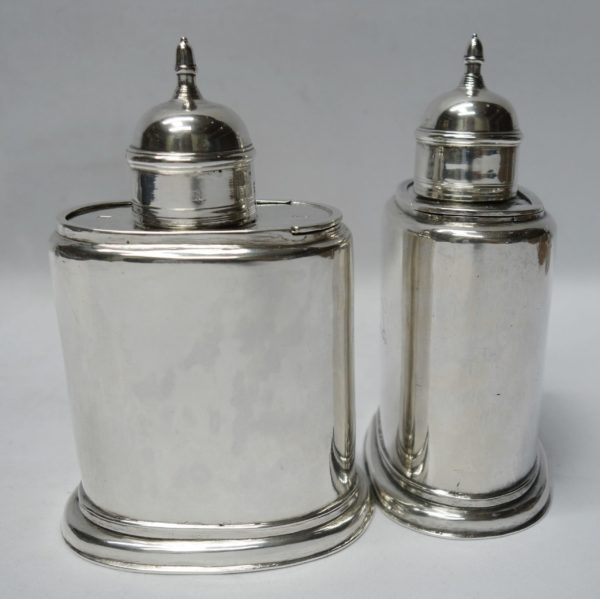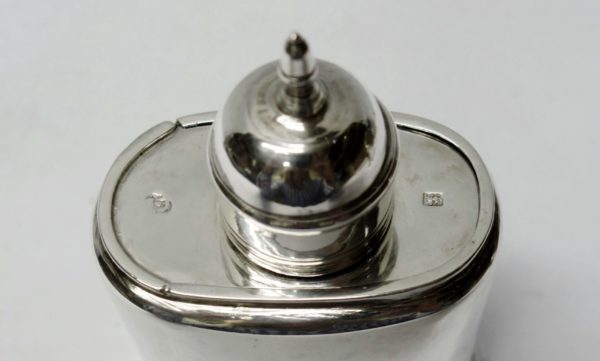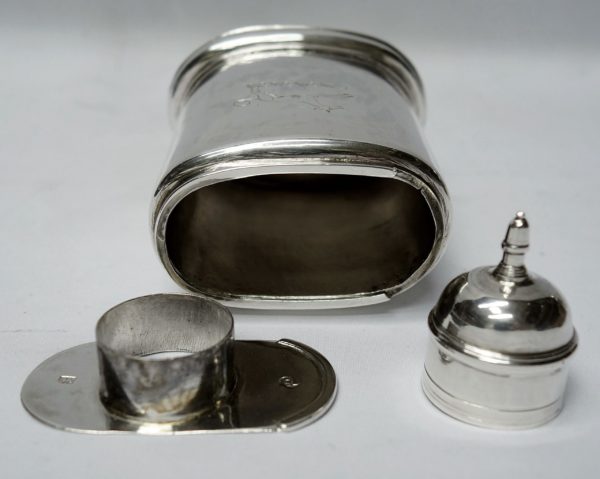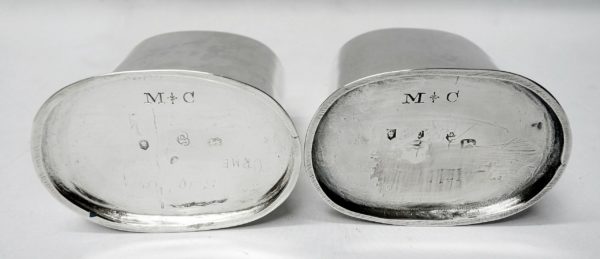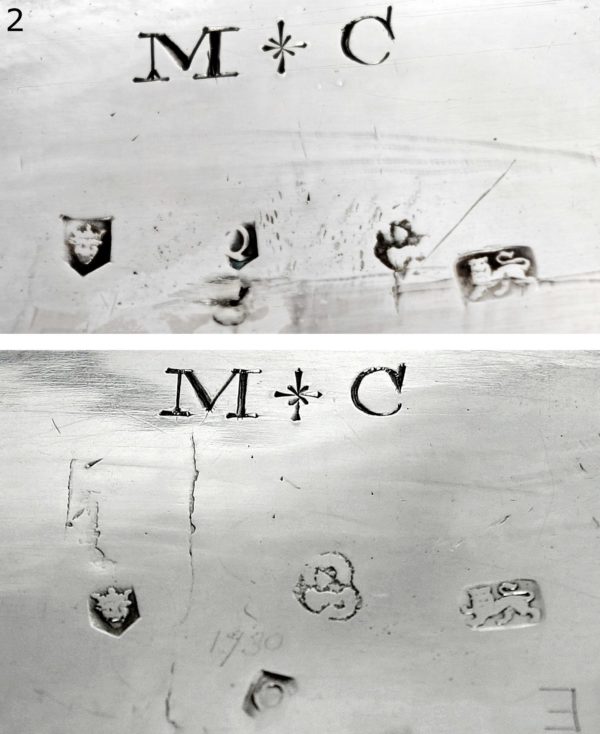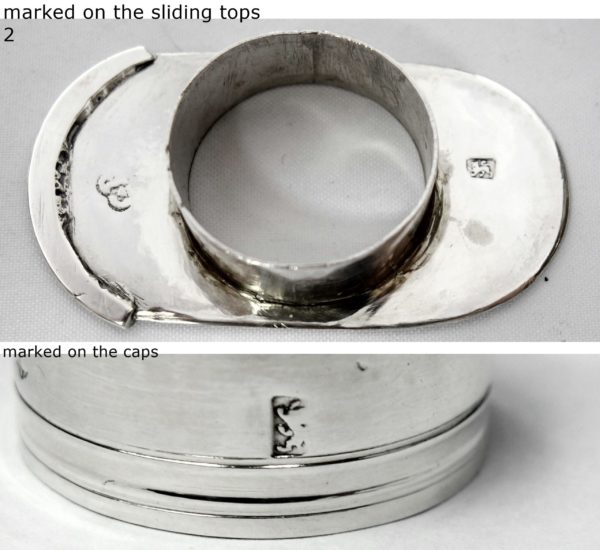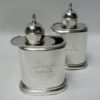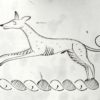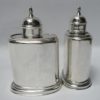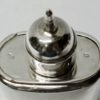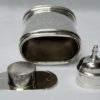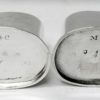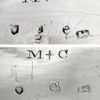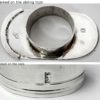Antique George II Silver Tea Caddies with Sliding Tops
SOLD
Stock: 9141
Date: 1731
Maker: Gundry Roode
Country: England
A rare pair of antique sterling silver tea caddy boxes of oval form with sliding lids. The removable cap doubles...
Description
Description
A rare pair of antique sterling silver tea caddy boxes of oval form with sliding lids. The removable cap doubles up as a tea measure. Lovely plain design and good gauge silver. Excellent patina. Each has a very sweet crest of a dog hand engraved to the front. Engraved underneath are the original owner’s initials. Total weight 353 grams, 11.3 troy ounces. Height 12.5 cm. Base 8.5 x 5.5 cm. London 1731. Maker Gundry Roode.
Literature: A Tea Caddy is a box, jar, canister, or other receptacle used to store tea. The word is believed to be derived from ‘catty’, the Chinese pound, equal to about a pound and a third avoirdupois. The earliest examples that came to Europe were Chinese tea canisters in blue and white porcelain with china lids or stoppers.
Tea in the early 18th Century was expensive, and also there was a tax on tea. so early tea caddies were small and made in precious materials such as silver, shagreen or tortoiseshell which reflected the valuable contents within.
Some of the earliest silver examples have sliding bases (or tops) and the cap was used for measuring the tea. By the mid eighteenth century matching sets were available, with two caddies (for green and black tea) and a sugar bowl, all fitted into a wooden or shagreen case, often with silver mounts. During the late 1700’s the locking silver tea caddy was introduced with its own key which the lady of the house kept on the chatelaine around her waist. Double locking tea caddies in silver are rare.*Britannia Standard. In 1696, so extensive had become the melting and clipping of coinage that the silversmiths were forbidden to use the sterling standard for their wares, but had to use a new higher standard, 95.8 per cent. New hallmarks were ordered, “the figure of a woman commonly called Britannia” and the lion’s head erased (torn off at the neck) replacing the lion passant and the leopard’s head crowned. This continued until the old standard of 92.5 per cent was restored in 1720. Britannia standard silver still continues to be produced even today.
Condition
These charming antique tea boxes are in very good condition with no damage or restoration. The engraving is still crisp. Each is stamped with a full set of clear and matching English silver hallmarks underneath, makers and lion mark on the sliding lid, lion mark on the top. Please note that this item is not new and will show moderate signs of wear commensurate with age. Reflections in the photograph may detract from the true representation of this item.
Maker Information
Maker: Gundry Roode
Gundry Roode, London silversmith, apprenticed to his brother Alexander Roode 1682. Freedom unrecorded. First mark 1710, 2nd (sterling) 1721, 3rd mark 1737.
Our Guarantee
Customer satisfaction is our primary concern
All silverware on our website is checked thoroughly prior to offering it for sale and every product listing contains a condition report and details of the silver hallmarks.
All items offered on our website include:
- Free Shipping Worldwide
- Tracked and Insured
- 14 day no quibble money back guarantee
- We are accredited members of LAPADA and conform to their strict professional standards
- We dispatch 1-3 days after receiving cleared payments
More detailed information about deliveries, returns and how to pay is available in the Help section at the bottom of this page.
